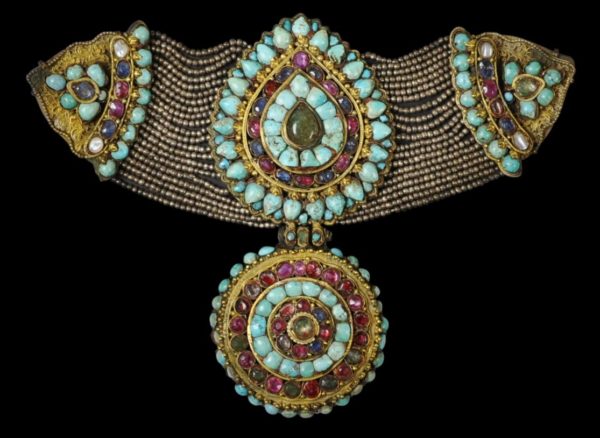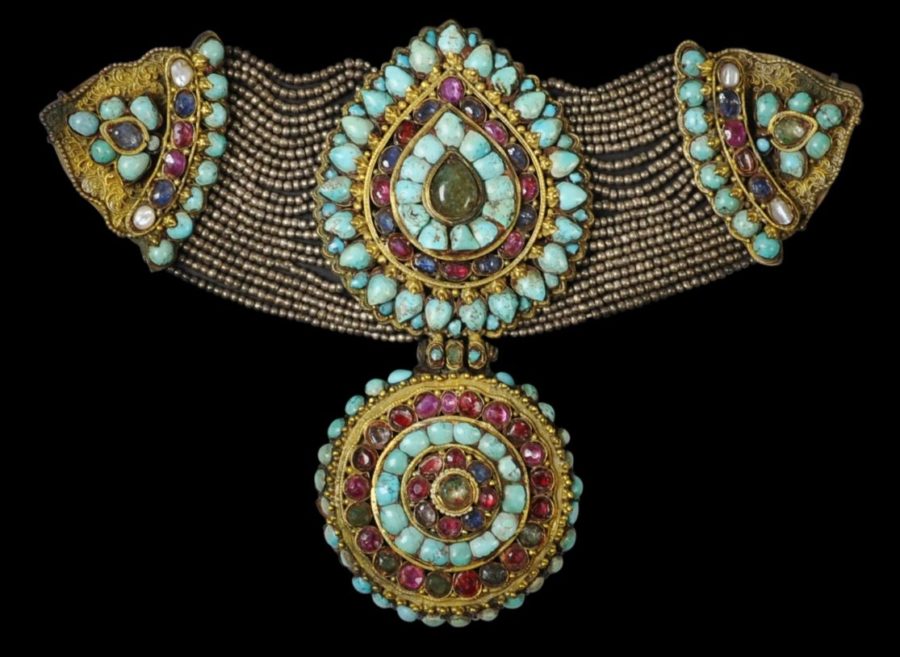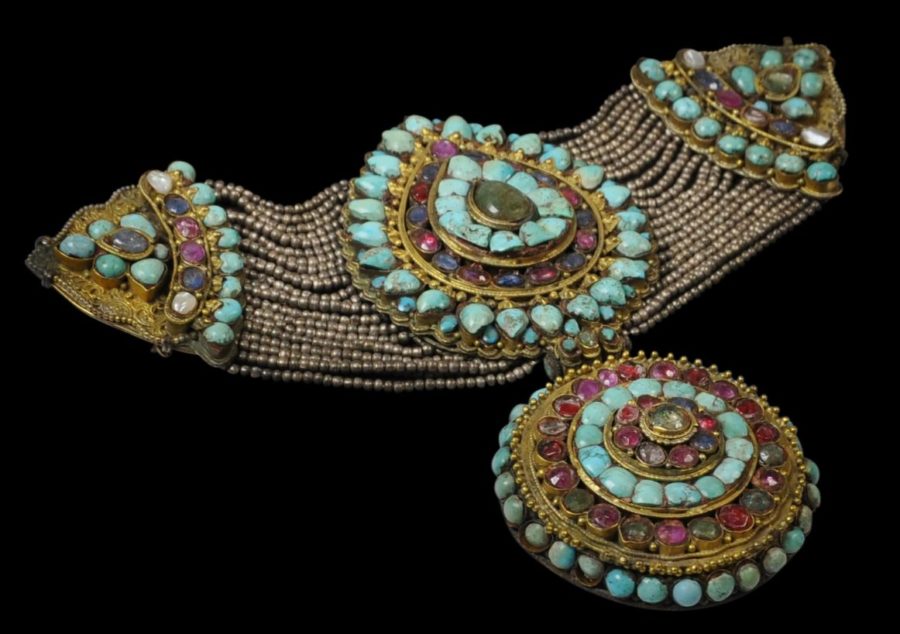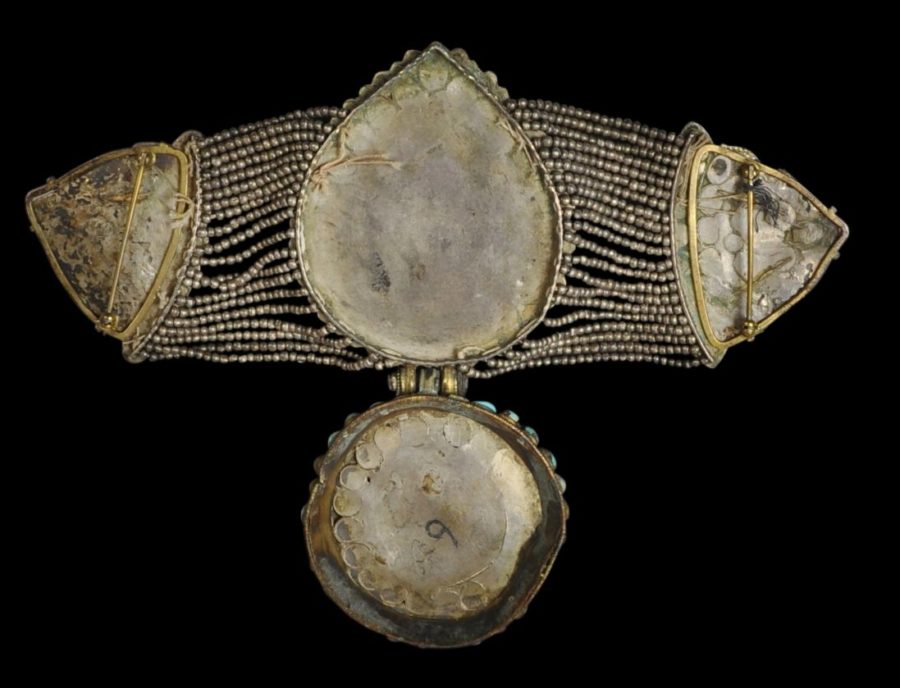This superb ornament is of silver or silver alloy and gold set with turquoise cabochons and a variety of semi-precious stones including rubes, pearls, emeralds (or perhaps green beryl) and sapphires. All are in gold or heavily gilded settings. Pearled gold and silver wire as well as gold or gilded filigree has also been applied, along with ample gold granulation work.
The ornament comprises a central tear-shaped panel to which a round pendant panel is joined by means of a hinge. The central panel is joined to two other panels on each side by means of multiple strands of tiny silver beads. These are quite remarkable for just how fine they are. (No other related piece of which we are aware has these – more typically, silver chains are used which are more robust.)
Most probably the ornament was intended as a breast ornament to be suspended across the chest on chains. It appears, however, to be based on the waist ornament that women were known to wear in Lhasa on their backs. (See Clarke, 2004, p. 76-77 & front cover for an example.) It is possible, however, that the Lhasa ornaments were based on a chest ornaments such as this!
Untracht (1997, p,. 36) illustrates a similar jewel in form which he attributes to Himalayan India (Ladakh, Jammu and Kashmir) and describes it as a necklace.
The example here most probably was made by Newar craftsmen for the Tibetan (or Tibetan-influenced) market.
The example here has obvious, significant age. A few of the stones are likely replacements, but most of the original stones seem to be intact. There are minor losses to some of the granulation work but this is barely noticeable. Overall, this is an excellent and rare piece.
References
Clarke, J., Jewellery of Tibet and the Himalayas, V&A Publications, 2004.
Untracht, O., Traditional Jewelry of India, Thames & Hudson, 1997.





